Best smart speakers 2025: top Amazon Echo, Google Nest and Apple options
T3's picks for the best smart speakers, including picks from Alexa, Apple and Google
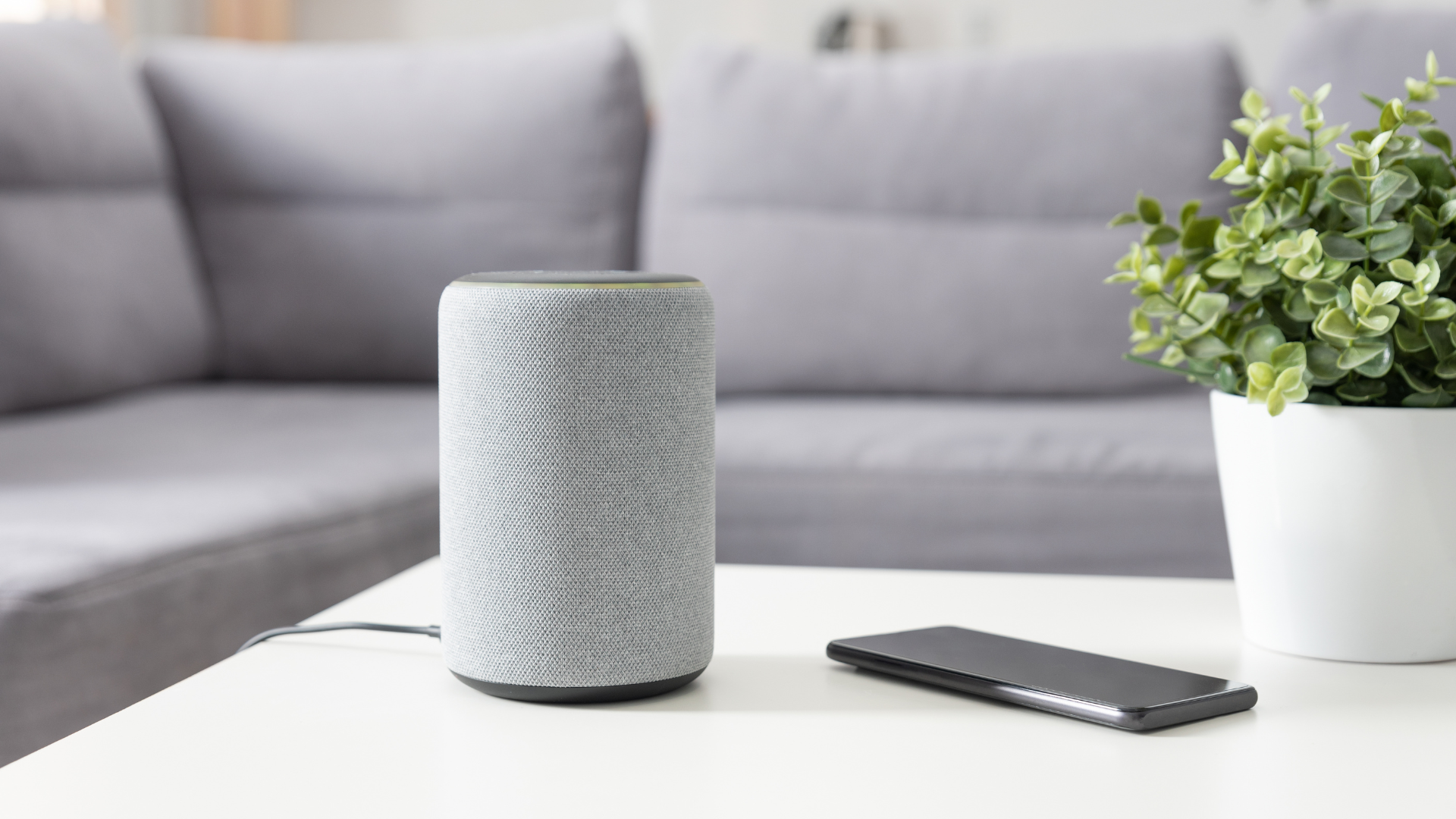

Investing in one of the best smart speakers means investing in a gadget that's does a lot more than simply playing music. Smart speakers act as a way of controlling your smart home too, for example, you can use them to control some of the best smart bulbs and your smart thermostat.
The best smart speakers can be used to talk to your family or friends in different rooms, check the weather and the news, and plenty more besides. You'll need to decide which digital assistant most appeals, as well as the purposes you want to put your smart speaker too, which will help you select the right one.
The guide below points out the best features of each product, but remember that more expensive isn't always mean better. There's something here to suit every budget, and still produce high quality sound – so for everything from Alexa, Sonos, Google, Apple and more, check out our full list of the best smart speakers below.
T3's Top 3

The best smart speaker overall
The Amazon Echo Show 10 is the best smart speaker, in terms of price, functions and audio.
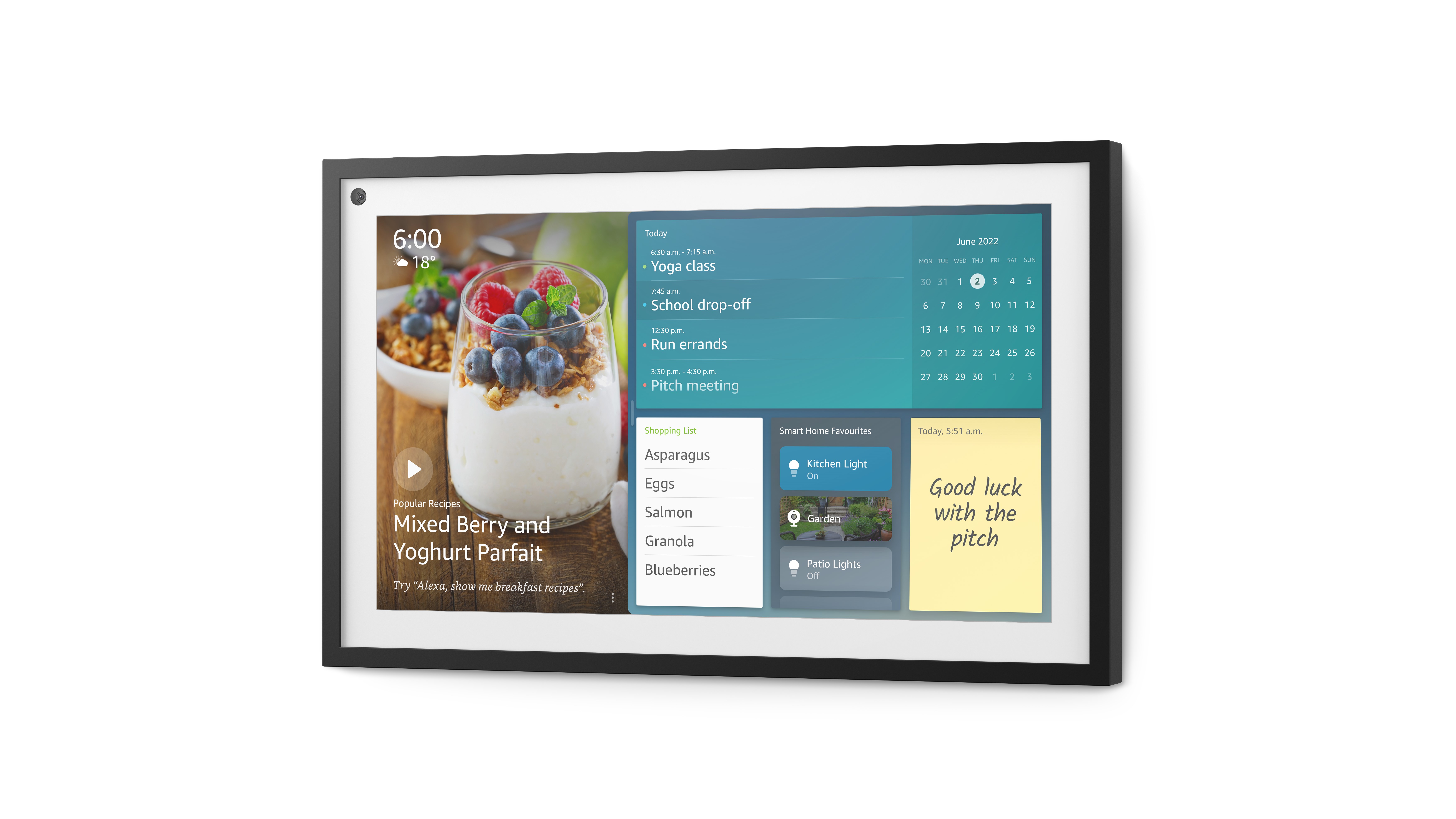
The best smart speaker and display
The Amazon Echo Show 15 is a brilliant smart speaker and display, with a huge 15-inch screen.

The best Google smart speaker
If you love Google, the Google Nest Hub Max is the best smart speaker option.

Bethan Girdler-Maslen is T3's Home Editor, covering style, wellness and living. She's become somewhat of a smart home expert, testing speakers, displays, lighting and plugs, so you know you can trust her recommendations.
21/10/25: We've updated the best smart speaker guide with more FAQs to help you make an educated choice on your purchase.
Best smart speaker ranking 2025
The best smart speaker overall
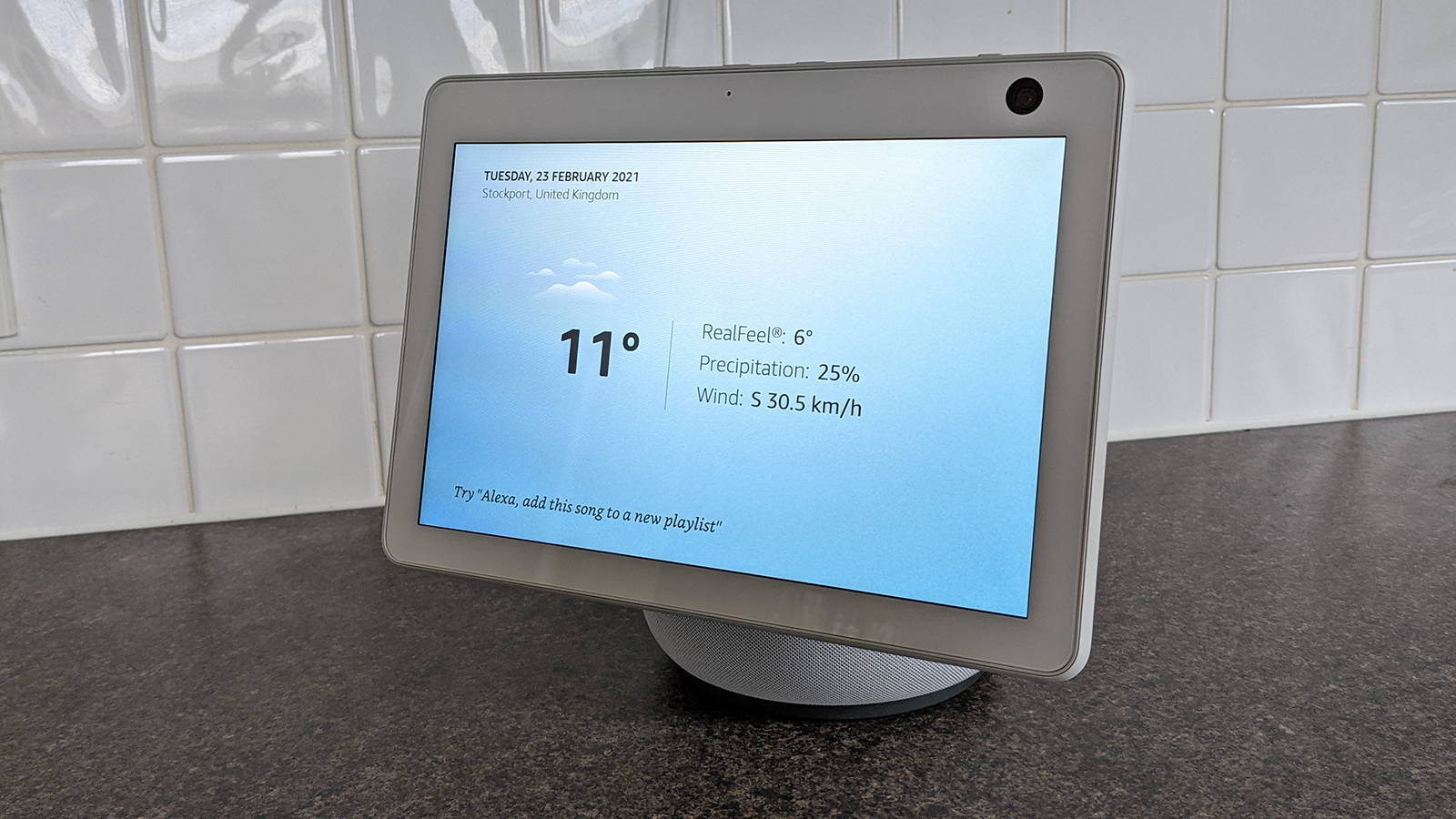

Reasons to buy
Reasons to avoid
The Amazon Echo Show 10 is the most comprehensive Alexa smart speaker to date, capable of doing the most, and with a unique trick: its large screen rotates to follow you around the room so that you can always see it clearly even if you need to move around. Smart screens have often found a home in the kitchen, where they can be used for recipe videos or fun videos to keep you entertained, and that's a great example of where the Echo Show 10 excels: if you need to move from position to position in the kitchen, then the screen just turns to go where you go, and you don't need to touch it with your dirty hands to be able to see what's going on.
The big screen is also ideal for making the most of what a smart display can do, and videos look good on it – the only downside here is that Alexa isn't the strongest for video service support (with its half-hearted YouTube integration being the biggest sore point). It's also more expensive than simpler smart speakers, but we can't begrudge it than when it's so useful. You can read more about it in our full Amazon Echo Show 10 review.
If you wanted something a little more modest, then check out the Amazon Echo Show 8 (2nd Gen, 2021) which is a little smaller and cheaper. And make sure you check our Amazon discount codes to get the best price.
The best smart speaker and display
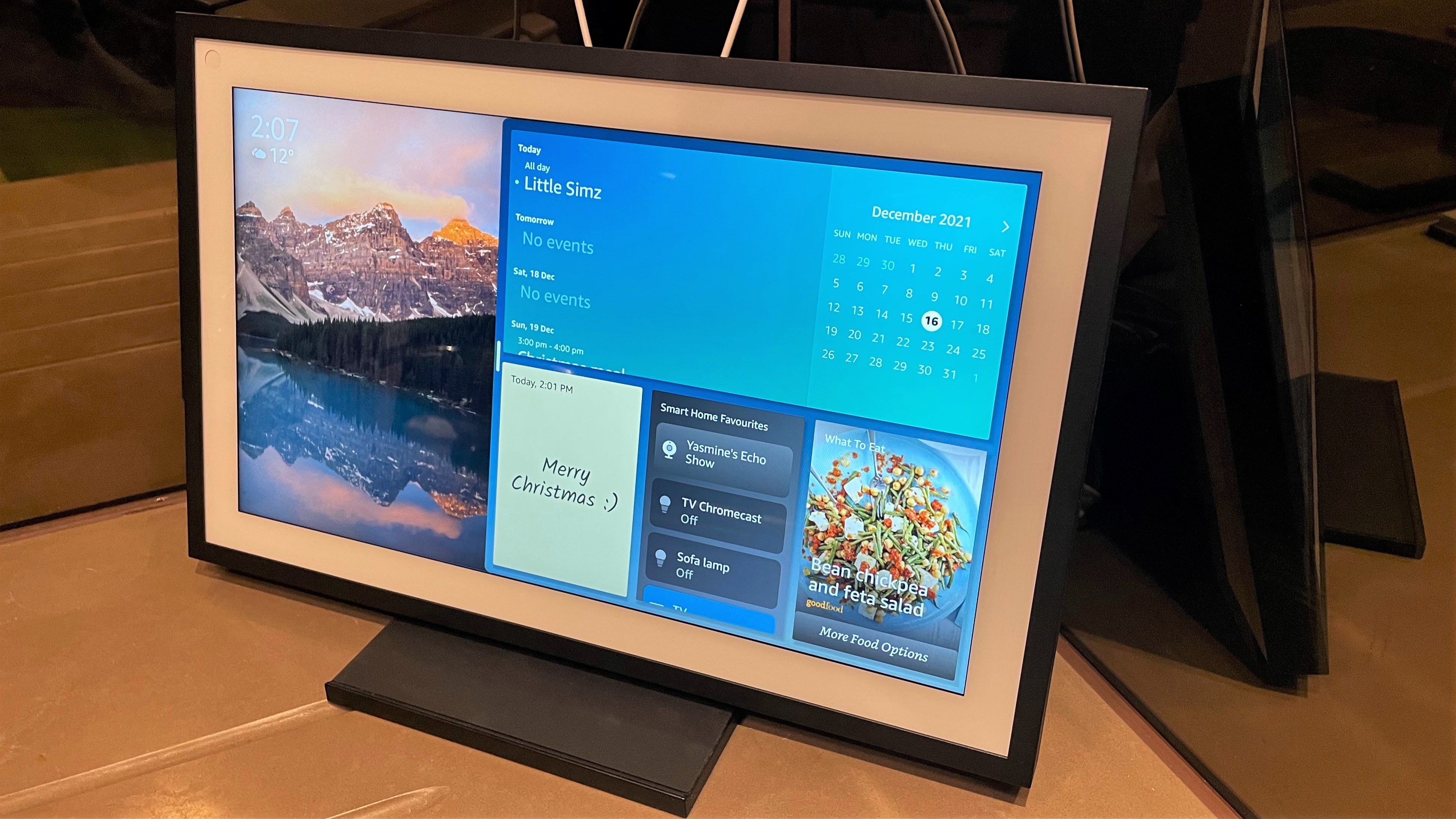

Reasons to buy
Reasons to avoid
Designed to be the focal point of your smart home, the Amazon Echo Show 15 is the biggest smart display yet. It can be mounted on the wall to look like a photo frame or placed on a stand. The 15-inch Full HD screen looks fantastic, and there's plenty of space to display Alexa widgets, which makes this the most usable and useful smart display on the market. You can leave sticky notes to family members, create shared calendars, see recommended recipes or control your smart home all from the home screen.
One downfall is its speaker system, from the Amazon Echo Echo 15 review you can tell that it's nowhere near as powerful or accurate as the Echo Show 10 so if you listen to a lot of music then that's probably still the better choice. But for most people, it will be fine because it is loud enough to clearly hear Alexa's responses. But in saying that there's so much to discover on the Amazon Echo Show 15, it's the most accomplished smart speaker yet in terms of usability.
The best Google smart speaker
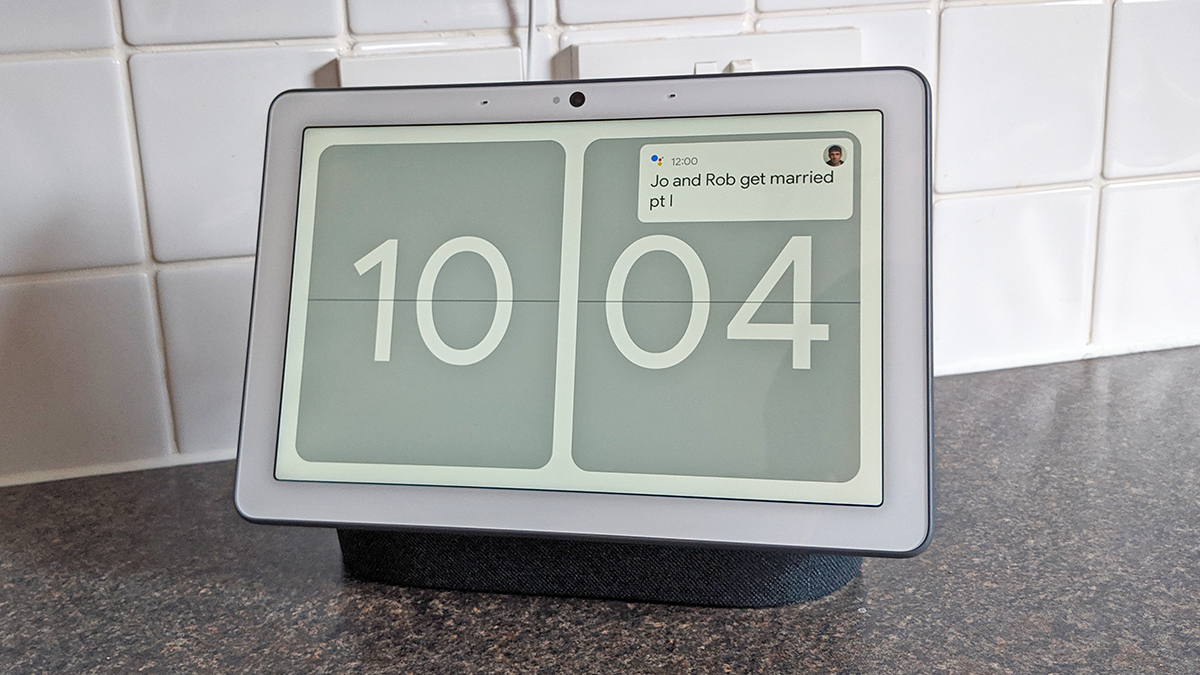

Reasons to buy
Reasons to avoid
This does absolutely everything in one package. By all means, if you'd rather run the compact Nest Mini, or opt for a smaller screen in the Nest Hub which came before it, you can. But for the most full-on Google Assistant smart speaker experience, this is the way to go. Why? It's the combination.
The screen is a crisp 10-incher so you won't need to squint. The speaker is a heavy, loud and great-quality cone. There's a camera for video calls, and you can use it for double-duty security camera purposes. And Google Assistant is a great smart environment to play in. Assistant is made even better with that screen on board: you can poke at your music with touch controls, watch videos, skim through photos and a lot more, and this also works as a Chromecast speaker and display. Here's our full Google Nest Hub Max review.
The best screenless smart speaker
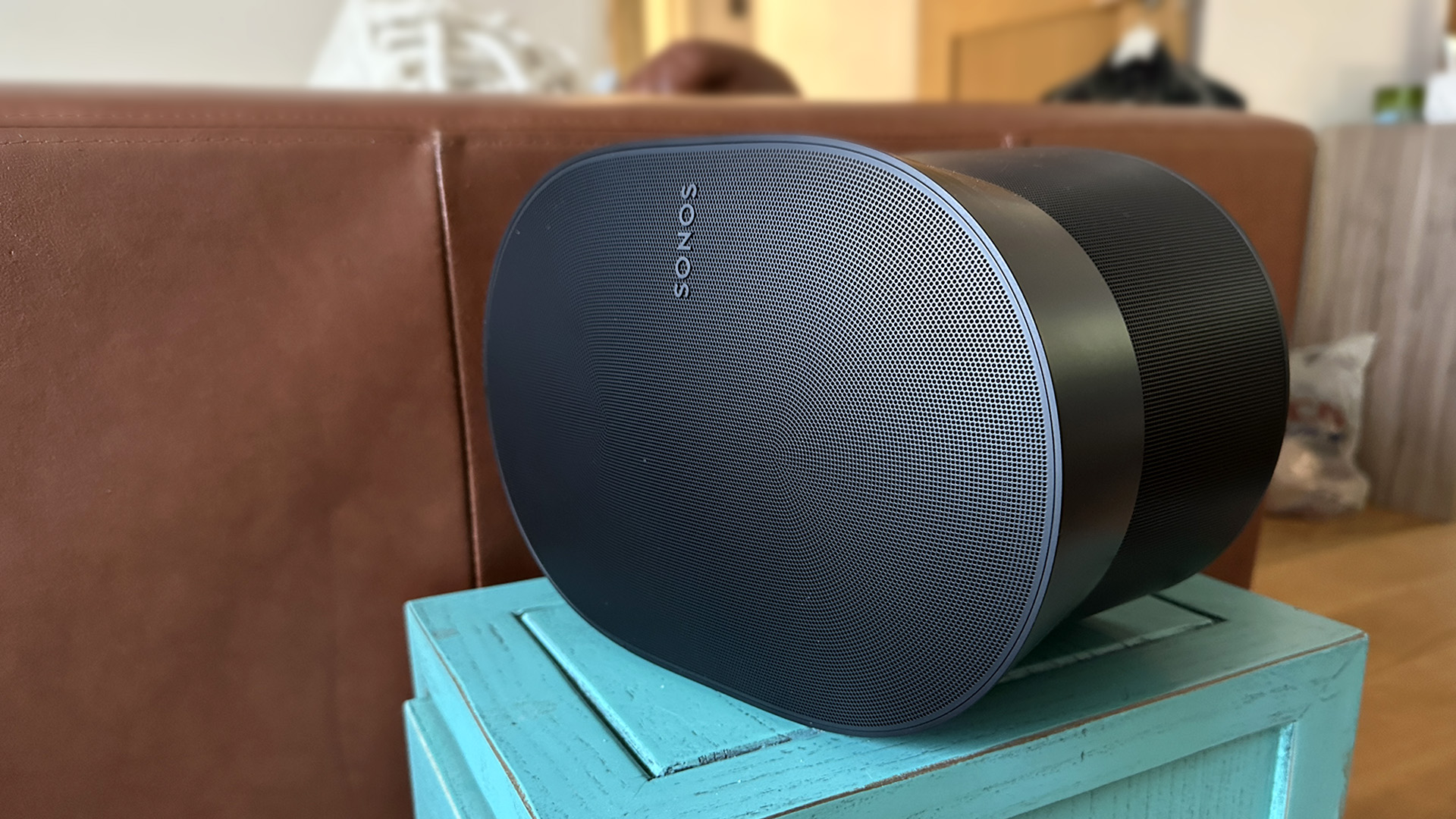

Reasons to buy
Reasons to avoid
It should strike you as no surprise that this Sonos smart speaker sounds absolutely incredible. It's definitely on the pricier side at £449 but you're getting plenty for your money. The difference that Dolby Atmos sound makes is something you have to hear to believe.
While not compatible with Google Assistant, the Era 300 supports both Alexa and Siri as well as Sonos' own voice assistant. It doesn't just use Airplay or the Sonos app either, the Era 300 has a Bluetooth button.
The design is a little unusual, featuring an hourglass shape that won't be to everyone's tastes, but we love how eye-catching it is. Check out our Sonos Era 300 review for more info.
The best Echo Dot smart speaker
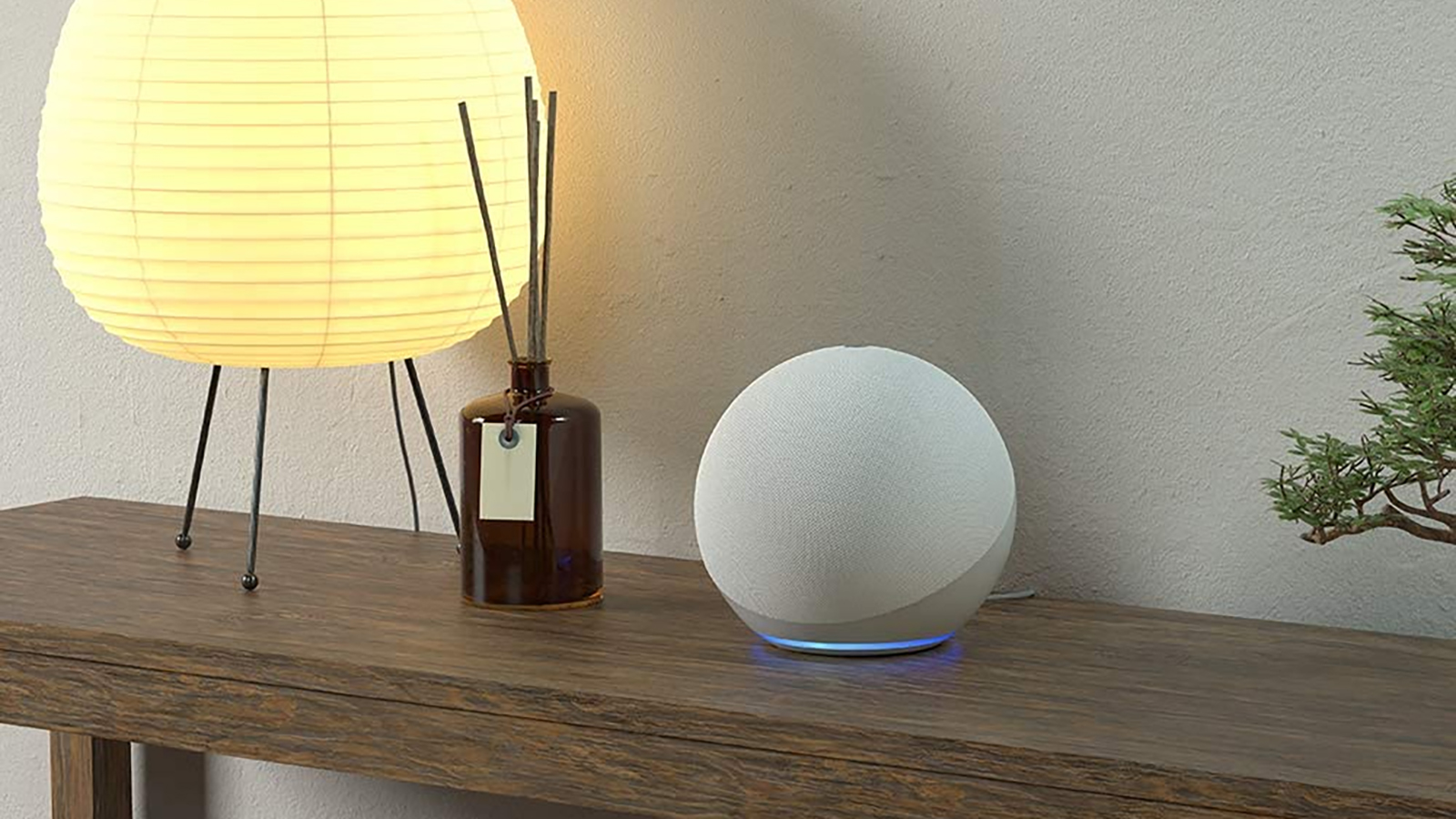

Reasons to buy
Reasons to avoid
The new Amazon Echo is bigger than the previous model, but that's because it beefed up its speakers and features as well as its shape. A large woofer and two tweeters provide better balance and clarity for music, while the Zigbee smart home hub functionality that used to be part of the Echo Plus only has been moved into the standard Echo.
Alexa is as capable as ever, but it can also respond a little faster to some queries in this model, thanks to Amazon's new learning chip, which can process some common voice requests on the device itself, making it quicker to respond to questions such as turning the lights off. We think the new design is a little less décor-friendly than the old one, but that's made up for by all its new improvements – it's the best Alexa speaker overall, as our full Amazon Echo (4th gen) review reveals.
The best Apple smart speaker
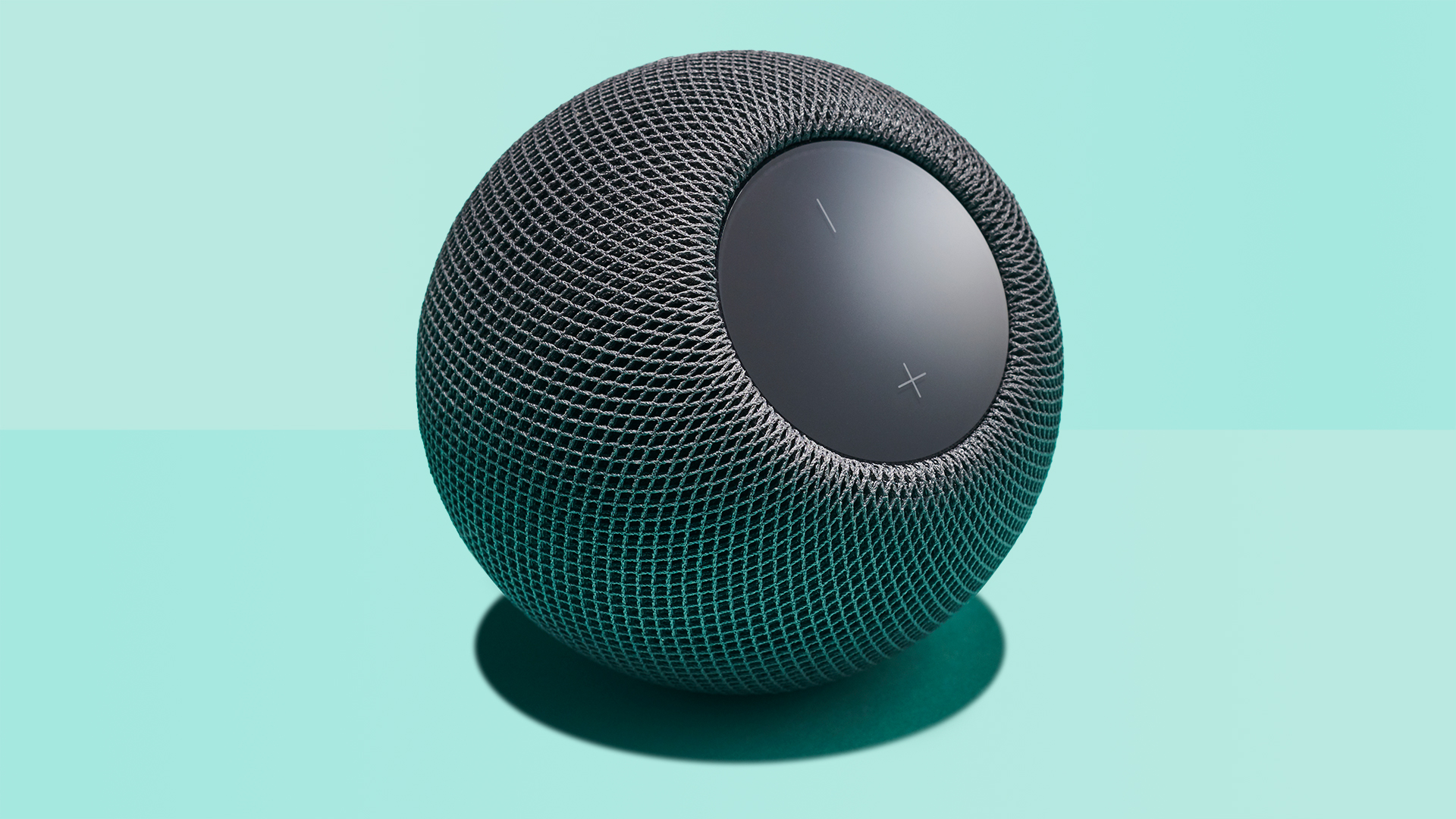

Reasons to buy
Reasons to avoid
The full-size HomePod was an incredible-sounding thing, but next to the competition it was hard not to look at its price without wincing. Now the HomePod mini is here, it's clear the folks from Cupertino have pulled off a cost-effective sequel in magnificent style. This is a quality little speaker with all the brains of its chunkier cousin – including, importantly, the ability to act as a HomeKit hub to control smart home devices. If you're using an iPhone, going HomePod is the slickest phone-to-speaker experience there is… although be warned that Siri continues to lag behind Alexa and Google Assistant for overall smartness.
The HomePod mini also packs a surprising punch in the sound department, with 360-degree audio filling most rooms without issue, and sounding truly excellent as a pair. It's the size of the Echo Dot, yet sounds as good (arguably better, depending on preference) to the full-size Echo or Nest Audio. Here's our full HomePod mini review for more on where it excels, and where it stumbles.
The best sounding smart speaker
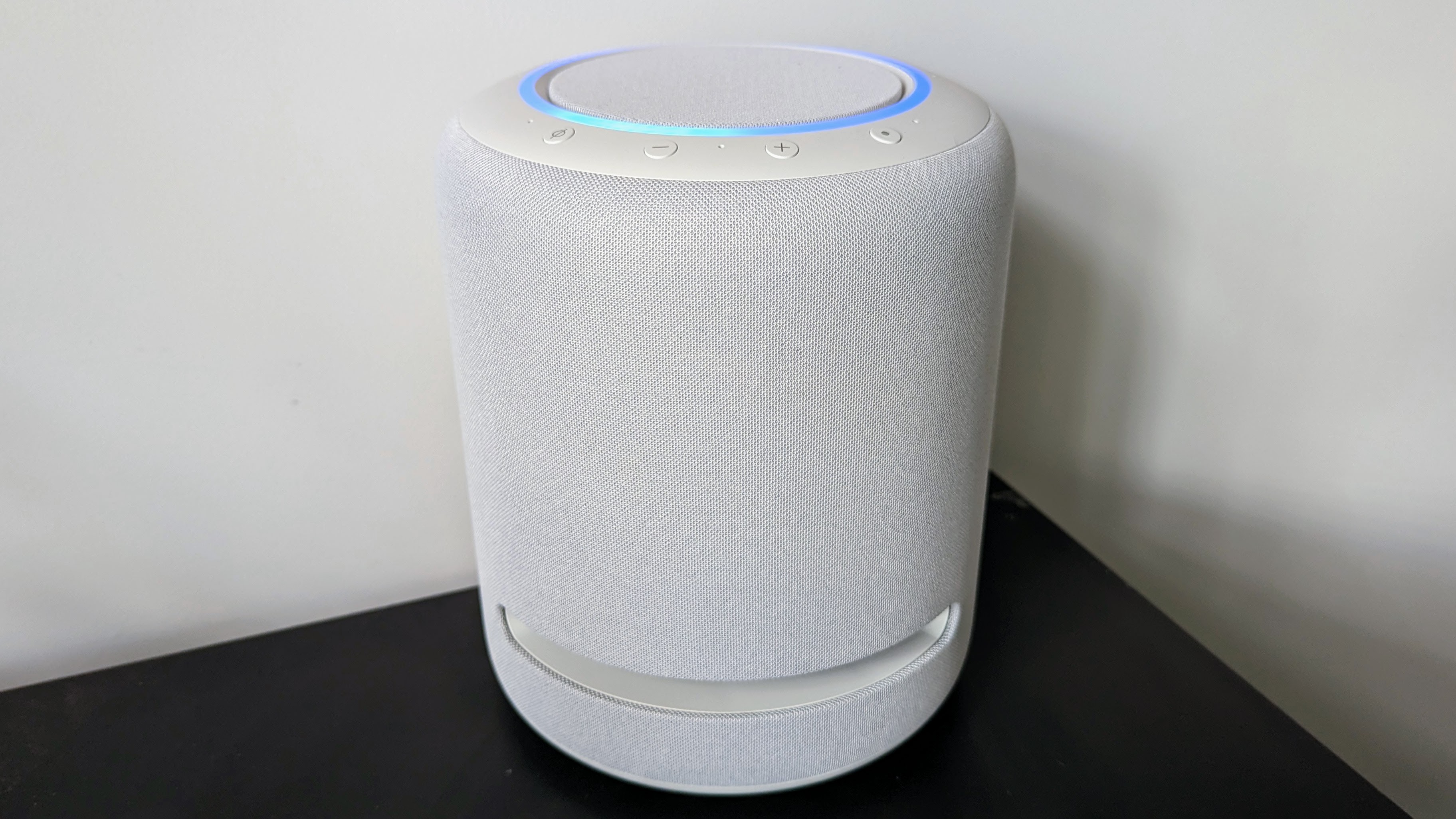

Reasons to buy
Reasons to avoid
Watch out Sonos and Apple, because Amazon's best-sounding Echo yet isn't here to play. The Amazon Echo Studio comes with support for the Dolby Atmos and Sony 360 Reality Audio standards. It's capable of filling a room and then some with rich, vibrant acoustics as revealed in the Amazon Echo Studio review.
One 1" tweeter, three 2" mid-range speakers and a 5.25" woofer are fitted inside delivering a huge 330W of power. Perfectly placed in your living room, this is predominantly a home speaker for listening to music. But because it has both a 3.5mm audio input and an optical input, you can hook it up to devices other than your phone as well, like your TV. On top of that, you do of course get all the smarts of Amazon Alexa.
The best full-sized Apple smart speaker
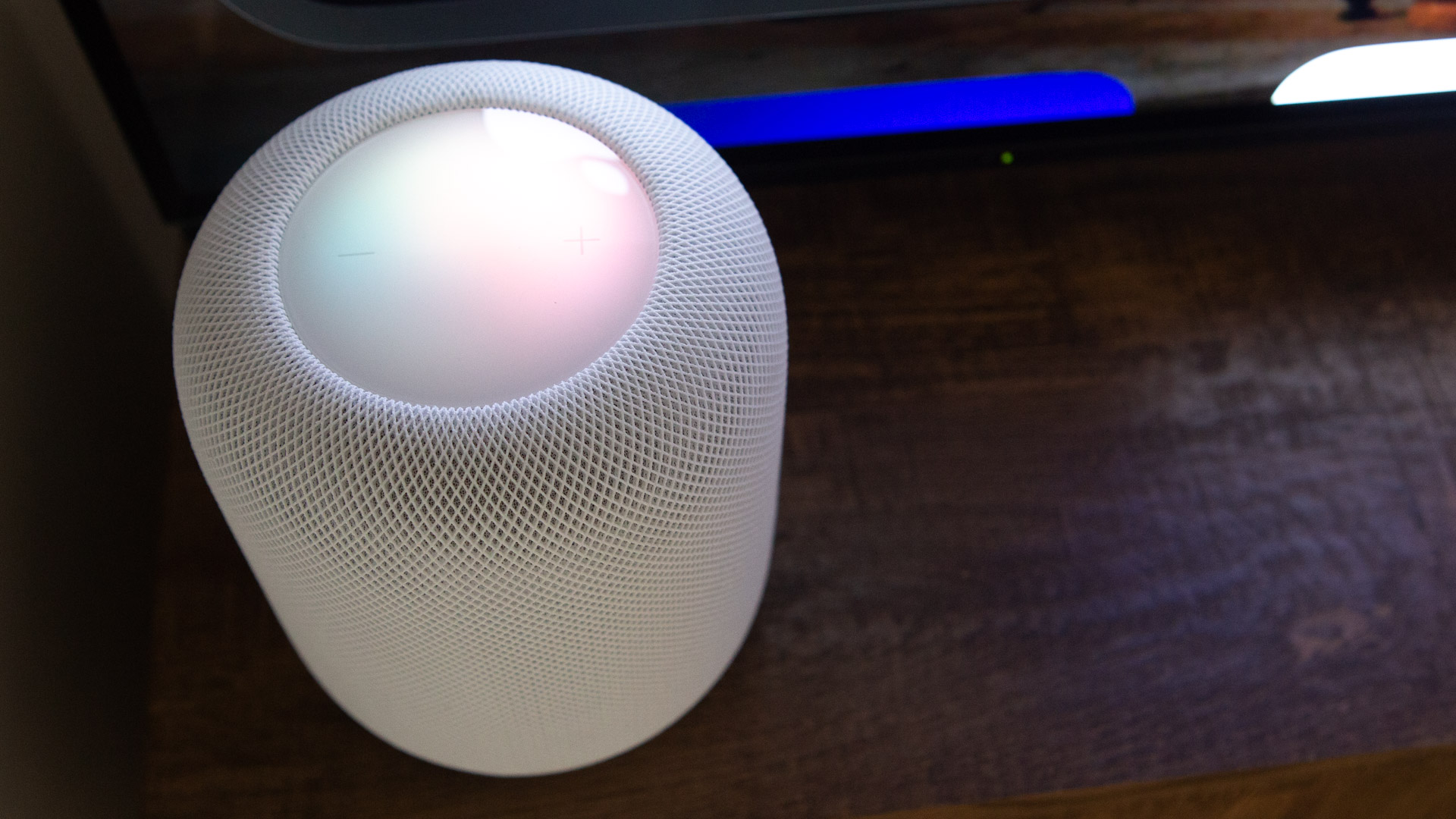

Reasons to buy
Reasons to avoid
There was a point where we thought this particular smart speaker was gone forever, but the Apple HomePod is back for a second go, and it's better than ever. Not only has the audio performance been improved, it also now works better as a hub for your smart home (supporting both HomeKit and Matter).
That's a running theme here, and indeed with Apple hardware in general. If you're using it with iPhones and Macs and iPads then it's great – really easy to beam over music, for example – but if you have Android and Windows devices then it's less appealing. As with any smart speaker, you need to think about the wider ecosystem.
There's no doubting the quality of the audio on offer here though, whether you're listening to music or podcasts or anything else, or using it as a sound system for your Apple TV. If you buy two of them, you can set them up as a stereo pair.
The best looking smart speaker
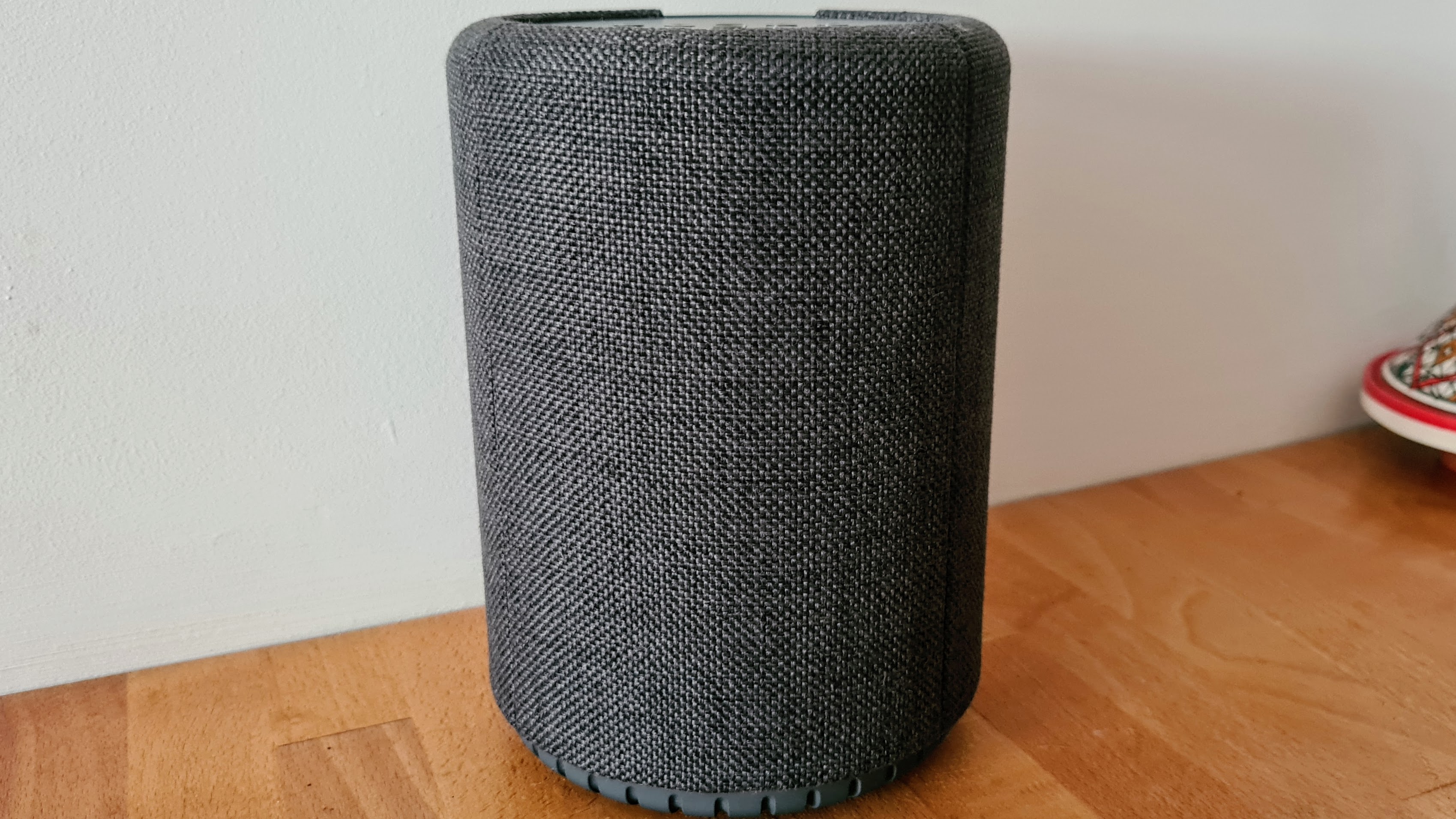

Reasons to buy
Reasons to avoid
If there’s one thing that Audio Pro knows how to do, it’s making great-sounding speakers. The Audio Pro G10 is no different. Not only does it produce crisp, loud audio for such a small speaker, but it also has the Google Assistant built-in. Get all of your burning questions answered or skip to the next song in your playlist using your voice. Just ask Google. With Chromecast and Apple AirPlay 2 support, you can hook the Audio Pro G10 up to your multi-room system, or seamlessly play music over Spotify Connect.
Setup is painless through the Google Home app, and you can control its bass and treble settings there too, though admittedly they don’t make much of an impact. What sets this speaker apart from the rest is a few small features that will actually go a long way for some, including a power button to save on energy and to switch the Google Assistant off without needing to unplug it. There’s also a 3.5mm auxiliary port. Read our full Audio Pro G10 review for more on where this speaker impressed us.
The best portable smart speaker
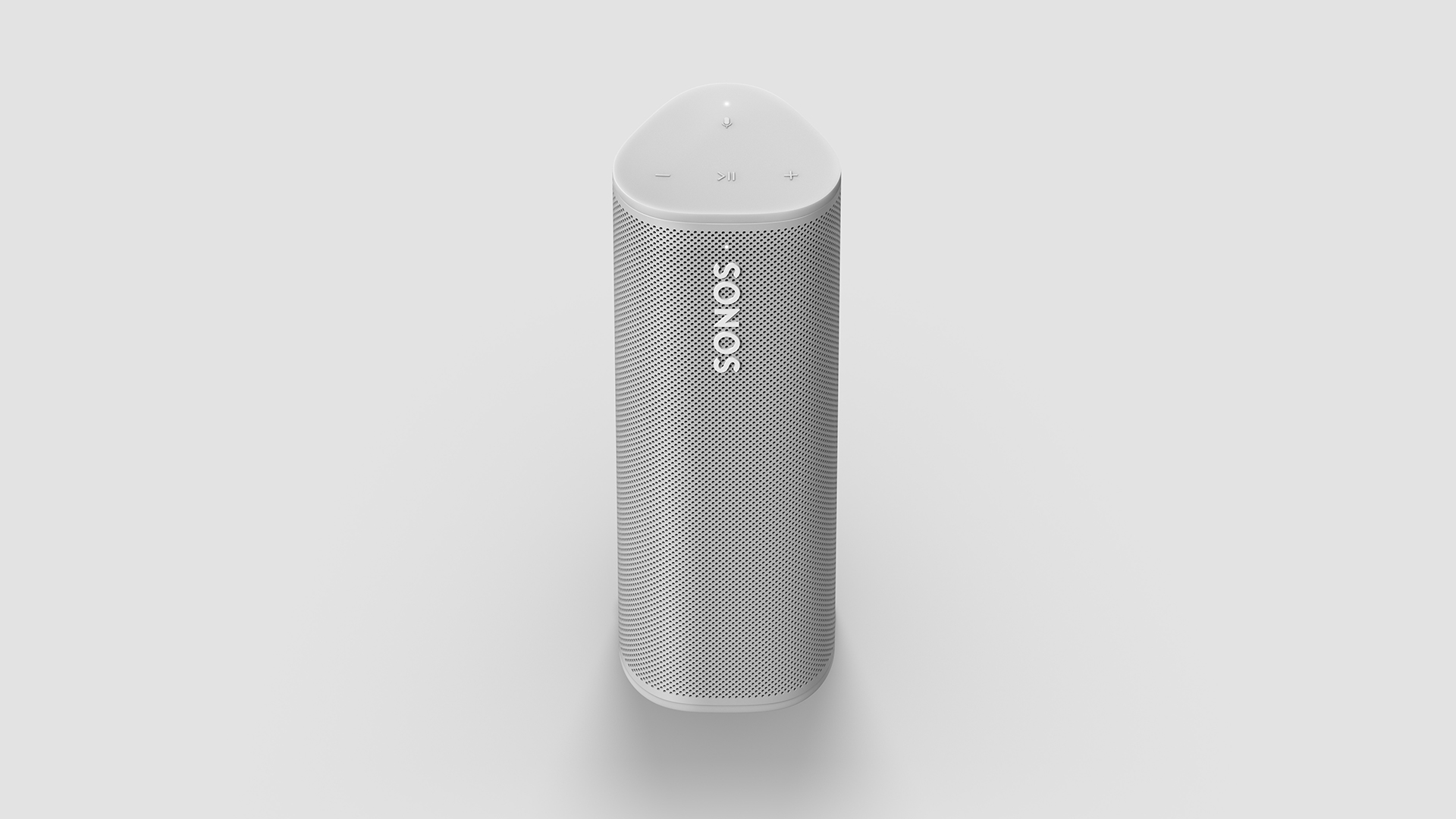

Reasons to buy
Reasons to avoid
The Sonos Roam is a great choice if you want your smart speaker to double as a battery-powered mobile speaker. It's around 6.5 inches long, so it's easy to toss in a backpack or a coat pocket to take on a trip with you. At home, it works on Wi-Fi, with Sonos or Apple AirPlay 2 multi-room capabilities, plus your choice of Google Assistant or Alexa as a smart assistant.
On the go, it uses Bluetooth, which kills its ability to be a smart speaker, we should note. It provides around 10 hours of life on its battery, which is fine, though other (less smart) competitors offer 15-20. It sounds good for such a compact speaker, but there are cheaper and larger options here that sound better for less money. So it's best to think of it as a portable speaker that doubles up as a nice smart speaker when at home, as our Sonos Roam review explains.
How to choose the best smart speaker
The majority of the smart speakers out there are also digital assistants, with many of the leading products coming from Amazon or Google. So if you are looking for a smart speaker with a digital assistant, then this is the way to go. Apple currently only has one product that offers Siri as an option, and for the most part Google and Amazon are the better way to go.
There isn’t really too much difference when deciding between Alexa vs Google Assistant – while Alexa can often be smoother overall, Google often ties in with more products in your home, so it really depends what you want to use your smart speaker for.
When choosing the right speaker for you, consider the audio quality, the size, the design and optional extras such as a screen and smart hub. Typically, the bigger the speaker, the better the sound.
How we test the best smart speakers
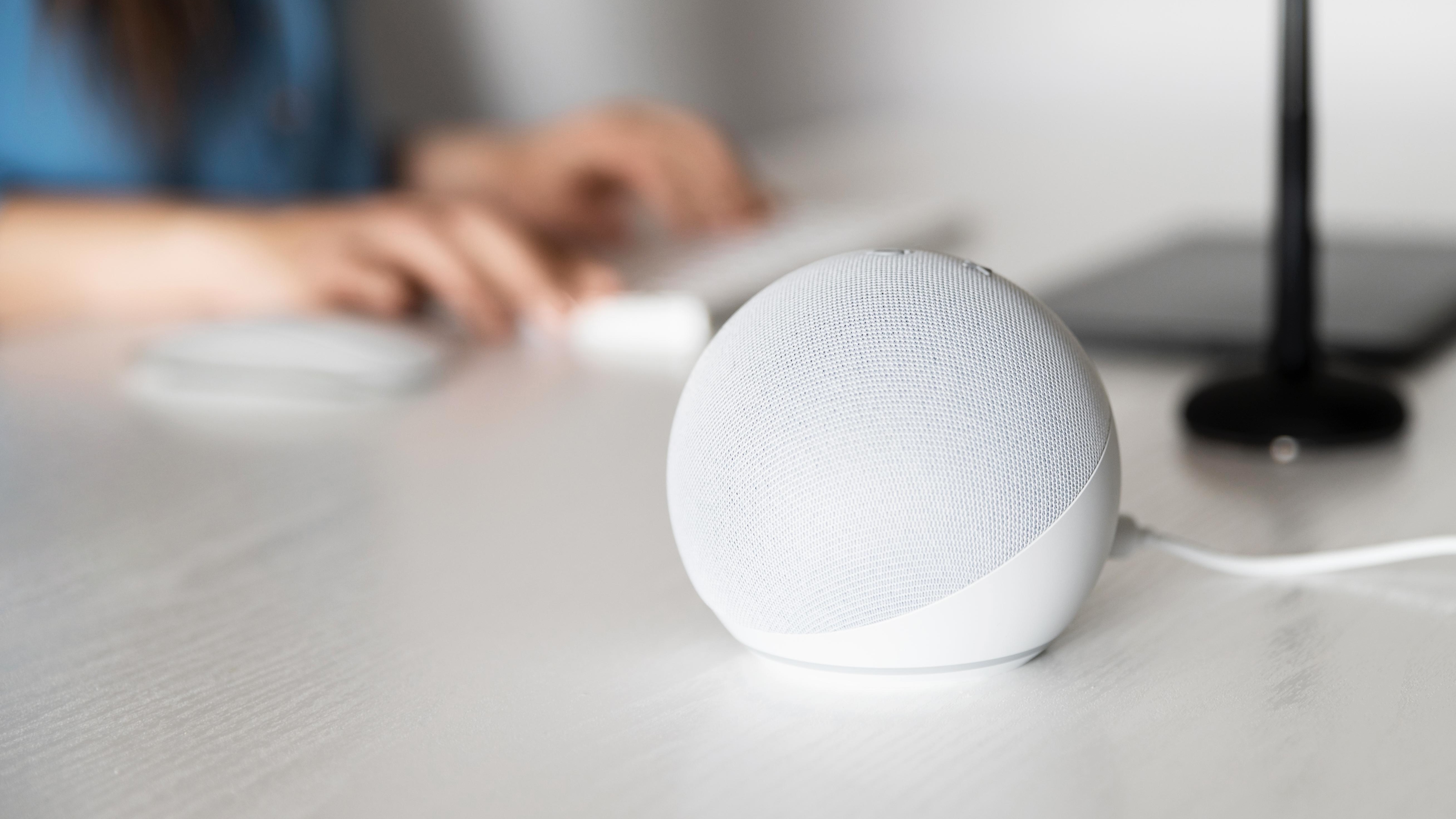
To test the best smart speakers, we call in the latest and greatest models from the likes of Amazon, Google, Apple, Sonos, and more... and get to testing!
First, we look at how easy it is to set up the smart speaker, its overall design and feel, and build quality. In terms of performance, we look at and listen to the audio quality, voice commands, and the colours of the screen if the smart speaker has one.
For smart features, we connect all our smart devices into the speaker or display and we see what functions they perform and how well, for example, setting light timers, adjusting thermostats and checking cameras.
See how we test at T3 for more details.
FAQs
What is a smart speaker?
A smart speaker is a type of speaker that has a virtual assistant built in. It connects to the Wi-Fi and while some may have buttons or controls, most are activated with a wake-up word, like 'Alexa', 'Okay Google' or 'Hey Siri'.
Compared to a regular speaker, a smart speaker performs tasks via your voice, like playing music, setting timers, reading instructions and answering questions. Smart speakers can also control your other smart home devices, like turning off lights, closing the blinds or increasing your thermostat's heat.
What is a smart display?
As you may have noticed with our number one and two spots in this guide, smart displays also fall under the category of smart speaker. Most smart speakers are just the speaker, while a display has a speaker and touchscreen.
Smart displays will read you information and complete tasks using voice controls, but you can also tap the touchscreen to search things. These devices are also better for controlling smart home gadgets, like security cameras and video doorbells, as you can see what's happening on the display's screen.
Amzon Echo vs Google: which smart speaker should I choose?
Smart speakers are surprisingly few and far between, so you'll often see the same two names coming up: Amazon Echo and Google Home. So, which should you choose?
It's worth thinking about what you want your smart speaker to do, like audio or video, smart home controls, and design. Once you've figured that out, you can decide whether Amazon or Google suit your needs. See our full comparison of Amazon Echo vs Google Home for more details.
How to clean a smart speaker
Cleaning tech is always tricky, as you can't soak them in water or use any harsh chemicals. To clean a smart speaker, you'll need to check if yours is fabric covered or plastic, as the cleaning tutorials will differ.
In general, avoid harsh cloths and cleaning solutions, and stick to wiping down the exterior and regularly cleaning to keep your smart speaker in top condition. See how to clean a smart speaker for more information.
Reviewer panel

Mat is T3's Editor-in-Chief, and has his finger on the pulse for the latest advances in technology. He's tested many smart speakers from Amazon, Sonos and Apple.

Yasmine is the former Reviews Writer for T3 and a freelance tech expert. She's tested smart speakers from Amazon, Audio Pro and more.

Matthew is is T3's former AV and Smart Home Editor (UK). He loves smart tech, and has tested smart speakers from Apple and Amazon.

David has over 20 years' experience in the tech journalism industry, and has tested many smart home essentials, including cameras, doorbells, lighting and speakers.
Get all the latest news, reviews, deals and buying guides on gorgeous tech, home and active products from the T3 experts

Beth is Home Editor for T3, looking after style, living and wellness. From the comfiest mattresses to strange things you can cook in an air fryer, Beth covers sleep, smart home, coffee machines, watches, grooming tools, fragrances, gardening and more.
In her spare time, Beth enjoys running, reading, baking and attempting craft projects that will probably end in disaster!
- Yasmine CrosslandFreelance Tech Expert
- Robert Jones
- David Nield